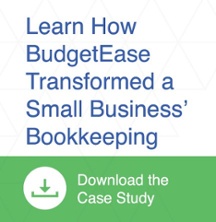 Providing a retirement program for your employees is an important benefit to attract and retain employees. We have found that simple 401(k) plans initiated by small organizations are easily funded and compound annually to provide valued employees a nest egg at retirement. What feels like small contributions each year result in meaningful retirement benefits over time.Before you “dive in” make sure you understand your responsibility to fund the plan. 401(k) plans face an annual non-discrimination test. The IRS is testing to see if a business owner, or its highly compensated employees, are contributing heavily to their 401(k) while the rest of employees are lagging behind. Ideally, all employees are taking advantage of the retirement plan, not just those with high salaries.
Providing a retirement program for your employees is an important benefit to attract and retain employees. We have found that simple 401(k) plans initiated by small organizations are easily funded and compound annually to provide valued employees a nest egg at retirement. What feels like small contributions each year result in meaningful retirement benefits over time.Before you “dive in” make sure you understand your responsibility to fund the plan. 401(k) plans face an annual non-discrimination test. The IRS is testing to see if a business owner, or its highly compensated employees, are contributing heavily to their 401(k) while the rest of employees are lagging behind. Ideally, all employees are taking advantage of the retirement plan, not just those with high salaries.
A highly compensated employee (HCE) is someone who earned, or will earn, at least $125,000 in 2019 or has more than a 5% stake in the business. Average contributions of highly compensated employees may not exceed the average contributions of everyone else by more than two percent.
How to Avoid the Non-Discrimination Test – Set Up a Safe Harbor 401(k)
Setting up a safe harbor 401(k) ensures your plan automatically passes the non-discrimination test or avoids it altogether. The caveat is that the employer must make contributions to each employee's plan (the same percentage of salary for everyone). For example, for every contribution made by an employee, the company adds another 3% of their salary. The amount you match will depend on your own contributions as a business owner.
Unlike most employer contributions, safe harbor contributions are fully vested when made. This means you must give all employees their share – even those who leave or are terminated during the year.
Plans can allocate contributions in one of three ways:
- Basic: Employer matches 100% of the first 3% of compensation, plus 50% of the next 2% of compensation.
- Enhanced: Employer matches 100% on the first 4% of compensation.
- Non-Elective: Employer contributes 3% of compensation to all eligible employees.
There are disadvantages of instituting a safe harbor plan, including:
- Added administrative work
- Under the safe harbor match, you need to commit to the plan for one year, and notices must be distributed every year (30 days before the new year begins on January 1).
- There are specific annual deadlines and requirements, so if you decide to offer safe harbor, it may take a few months to take effect.
- There is a termination fee charged by some 401(k) providers if you change your mind and decide to stop offering safe harbor.
- Depending on the salaries of your employees, it can be expensive.
Essentially, a safe harbor plan’s main benefit is convenience, less or no mandatory testing. It also aids employees in preparing for retirement.
For more information or bookkeeping help, contact us at www.budgetease.biz.






